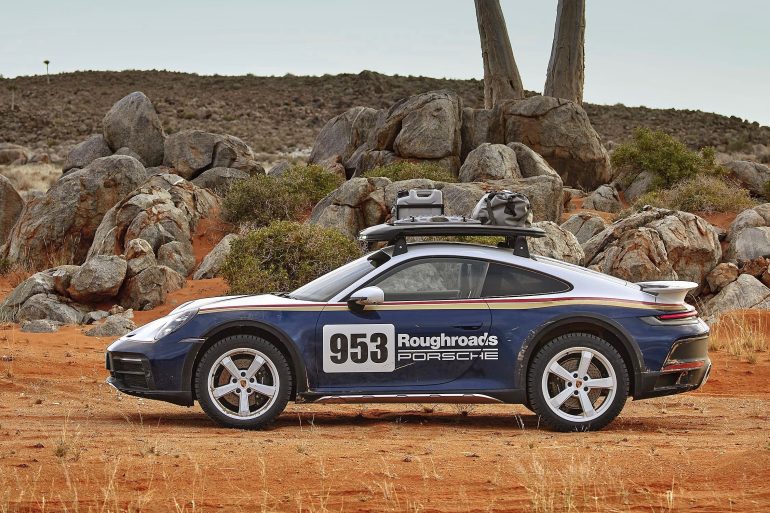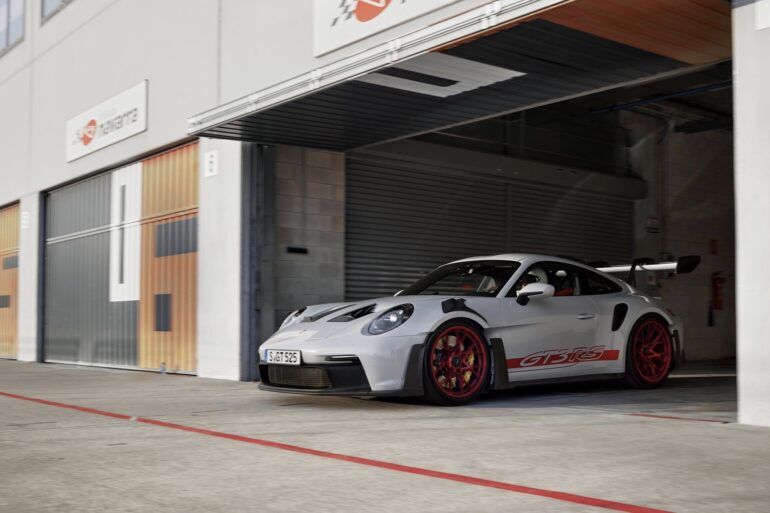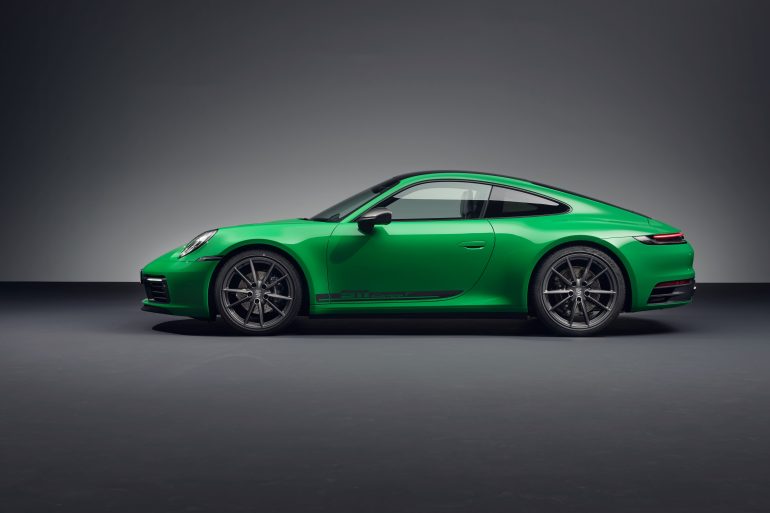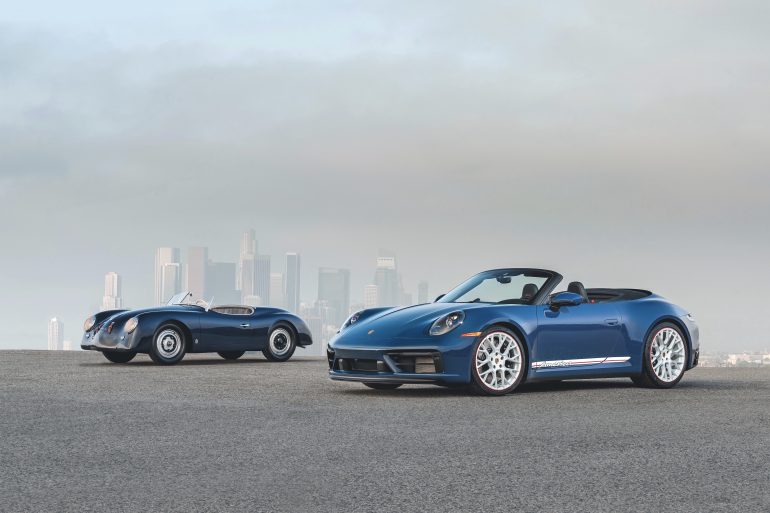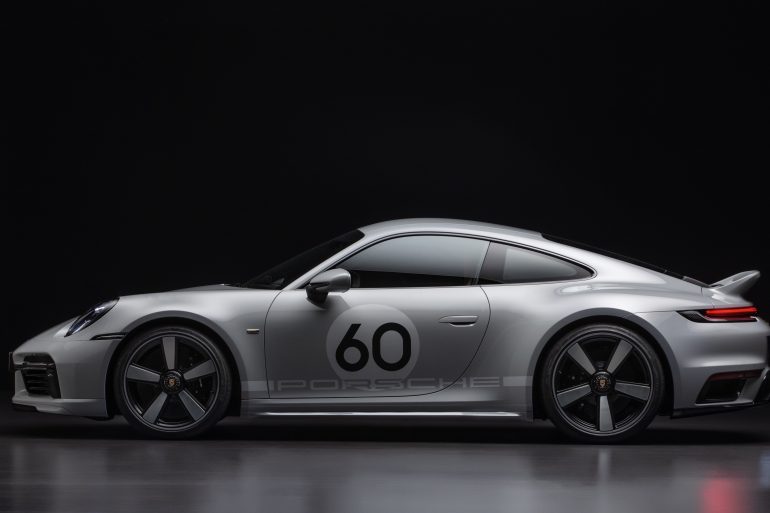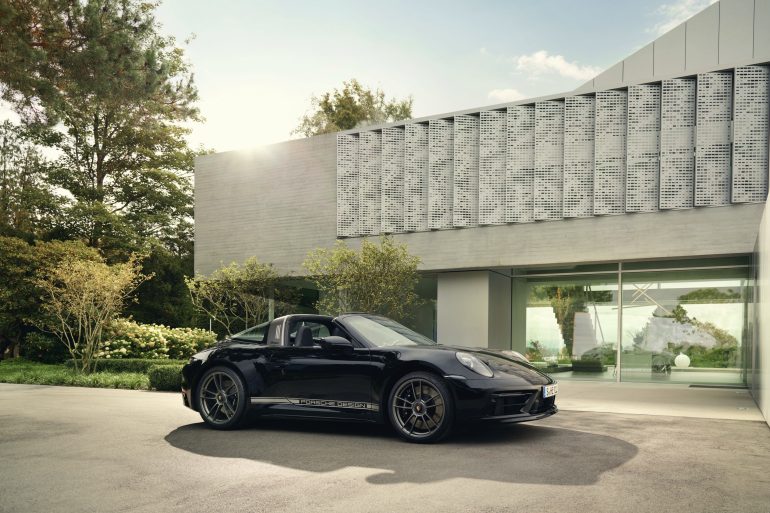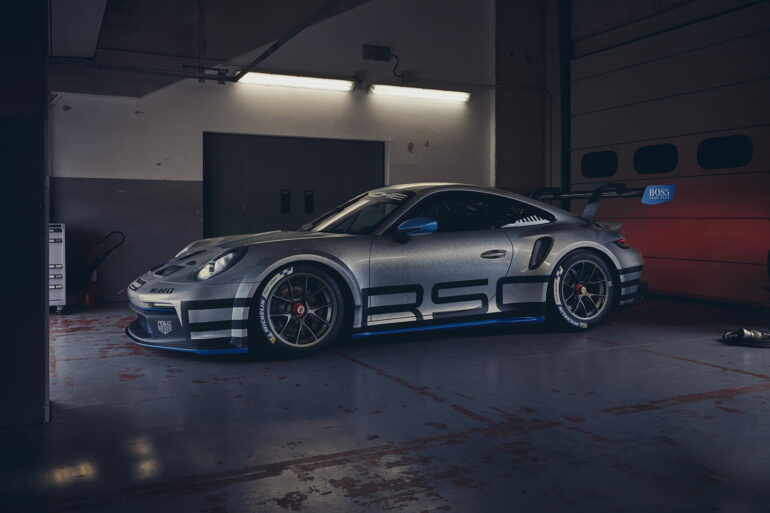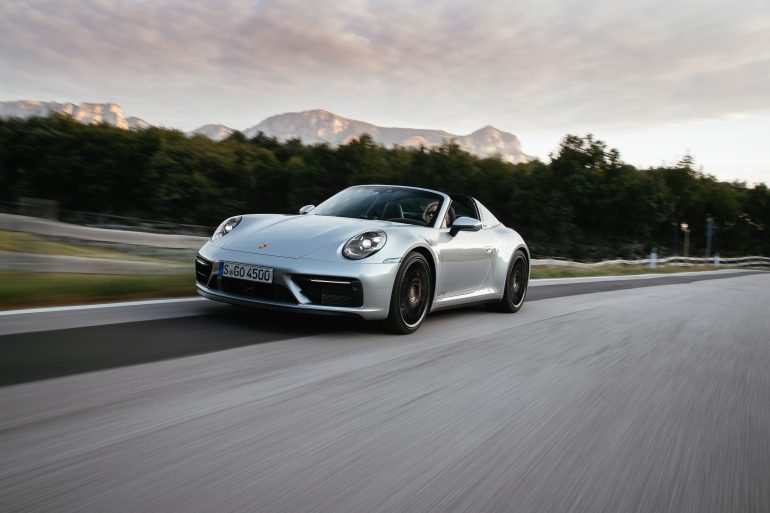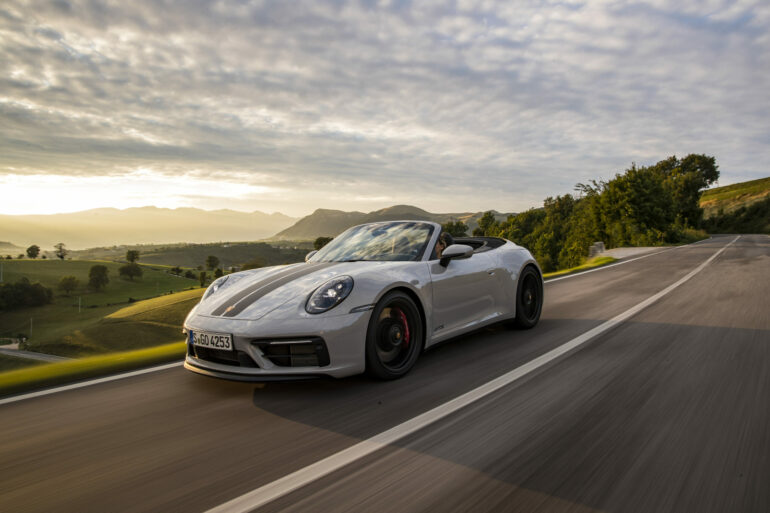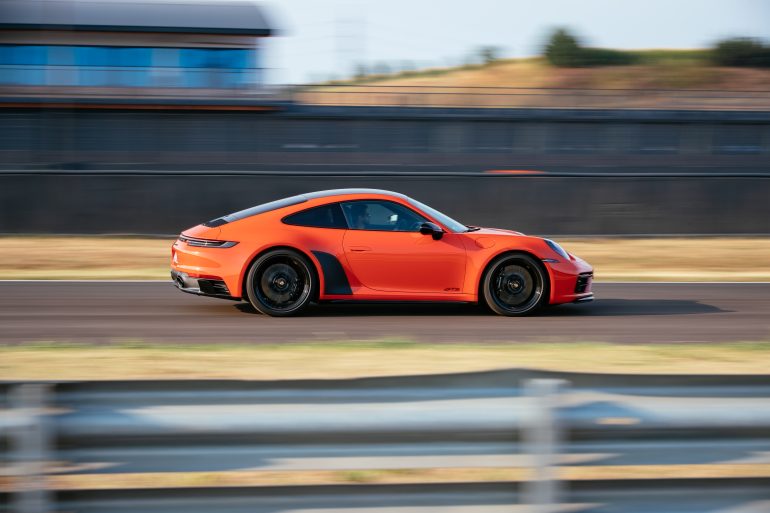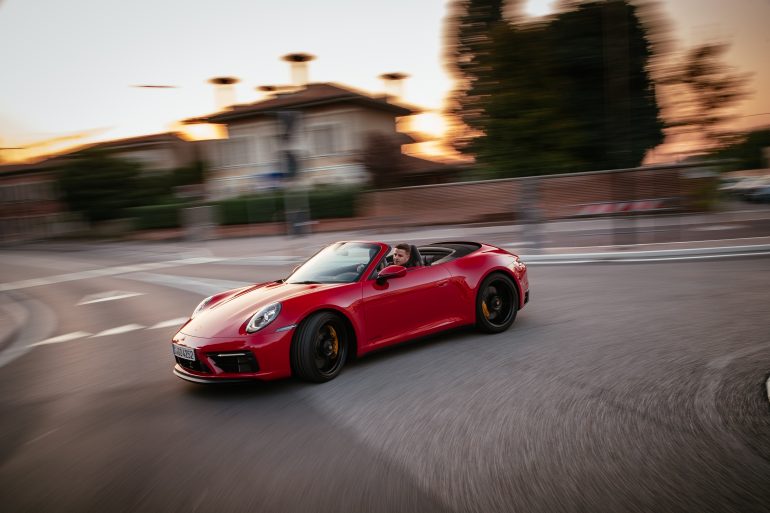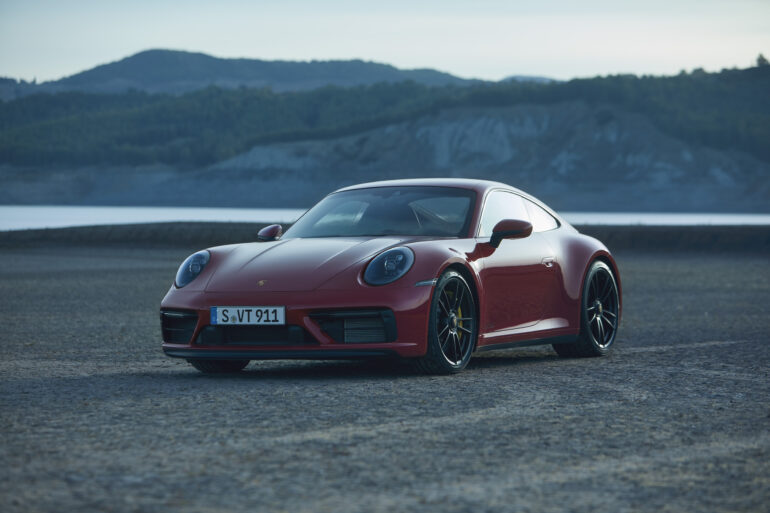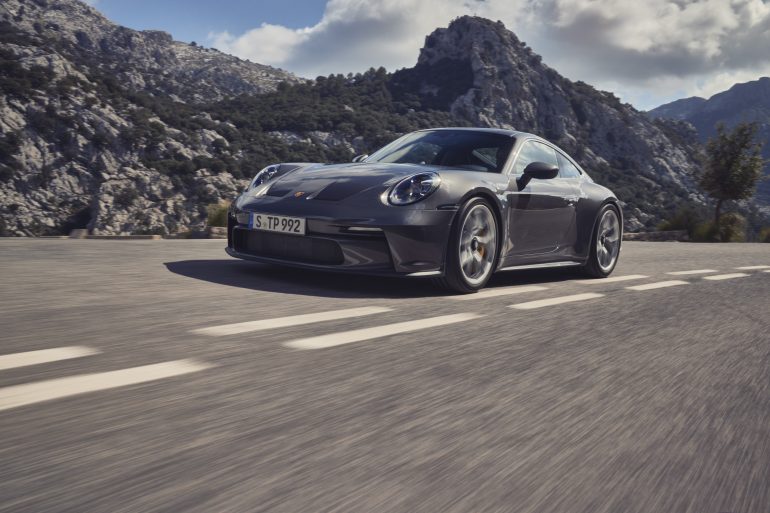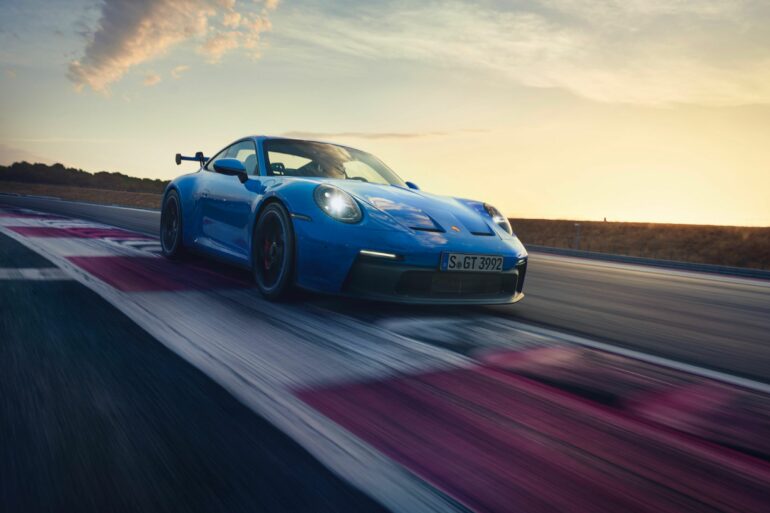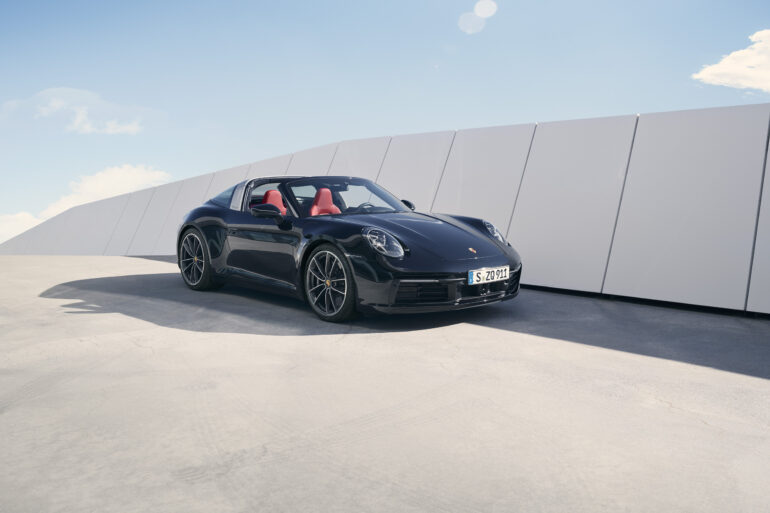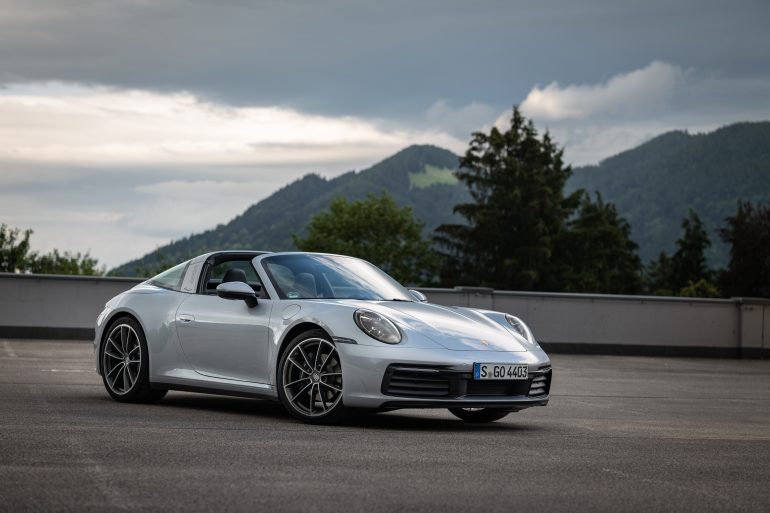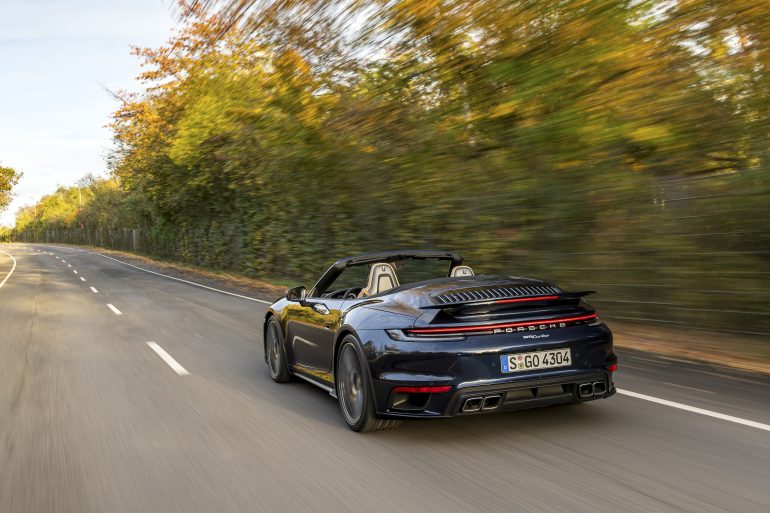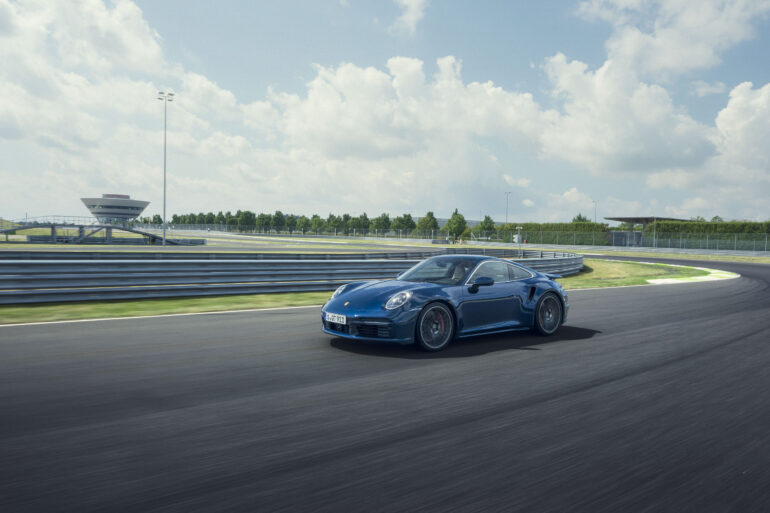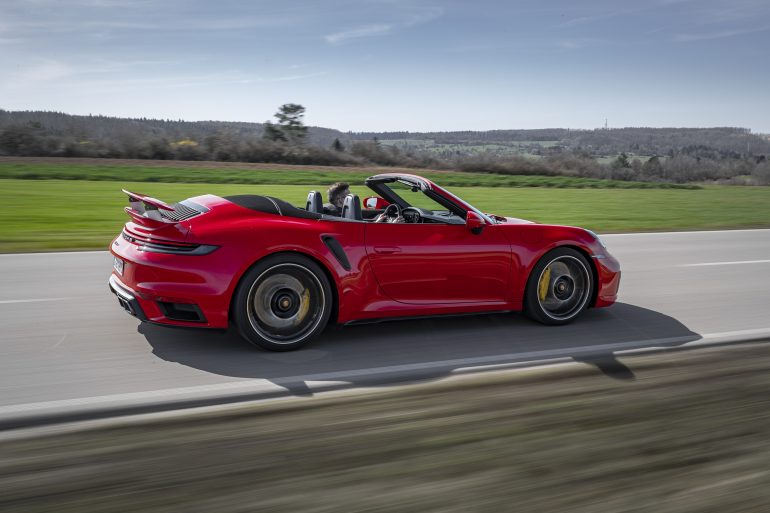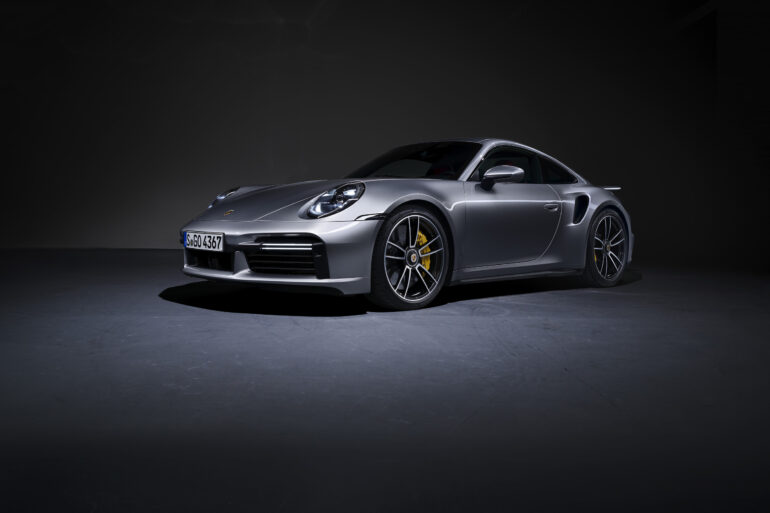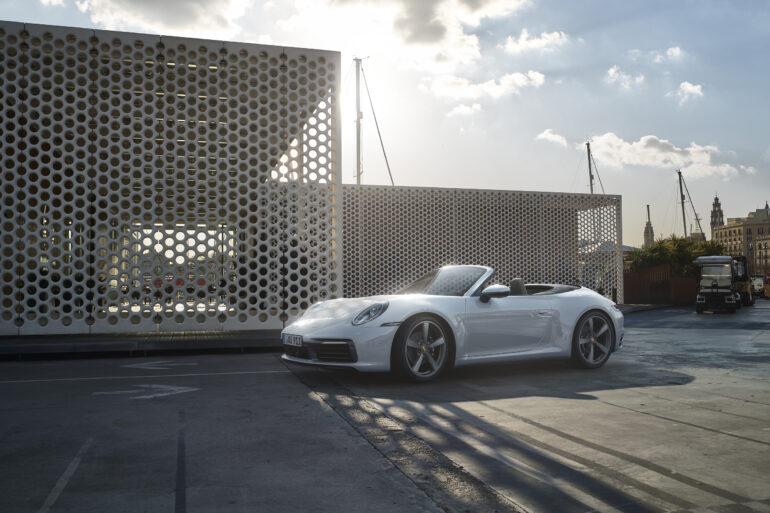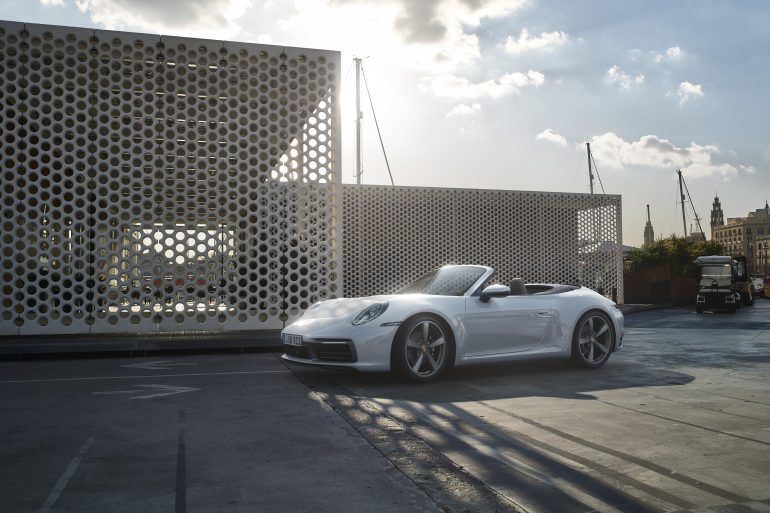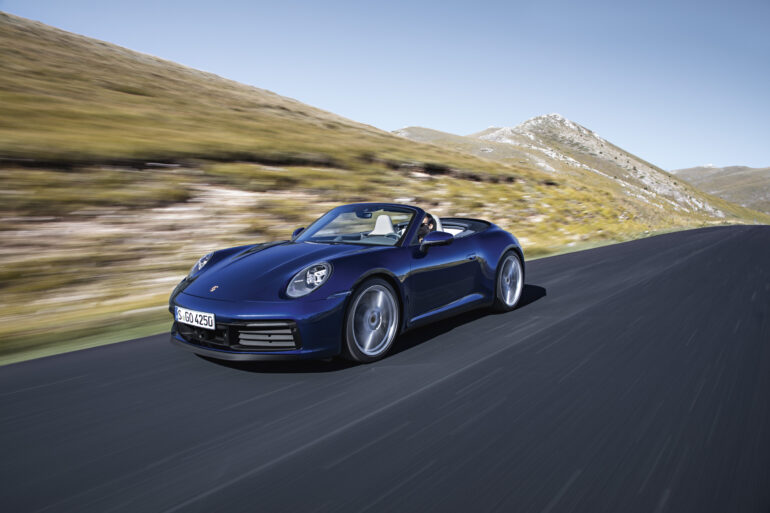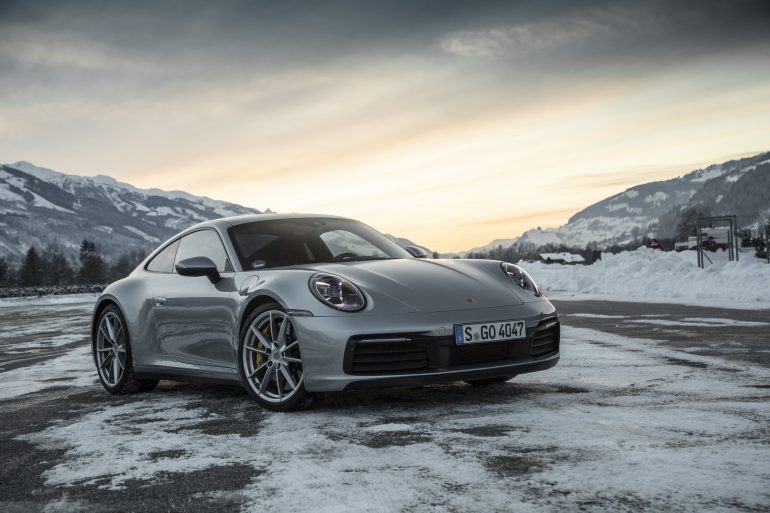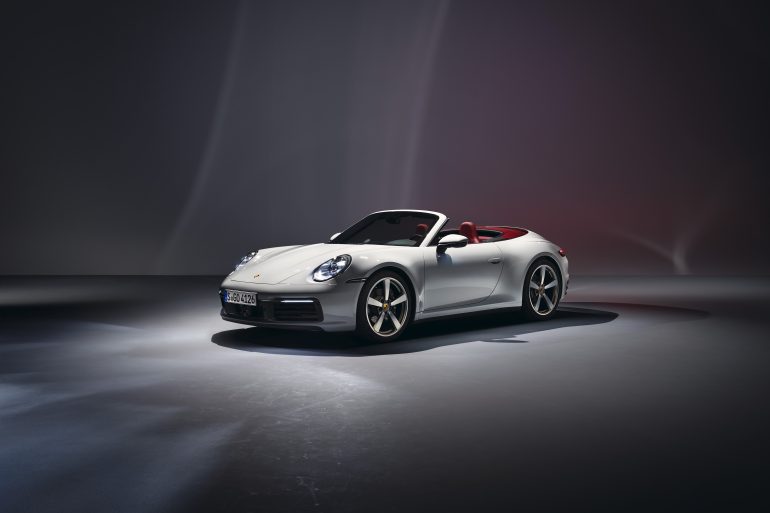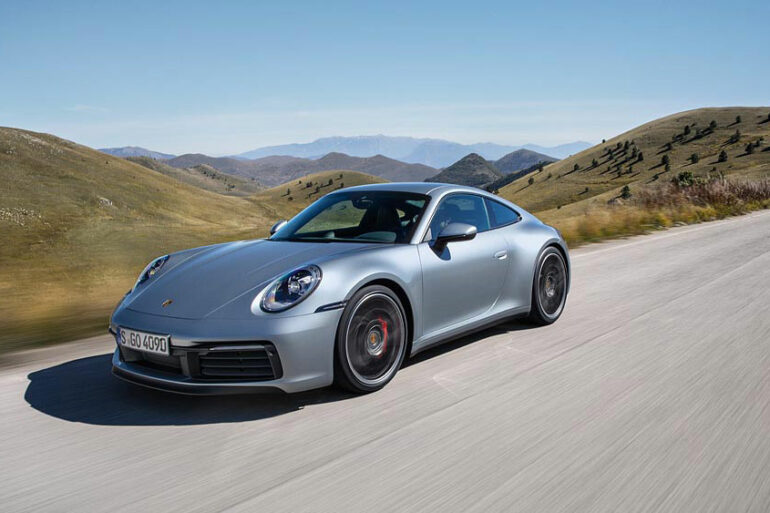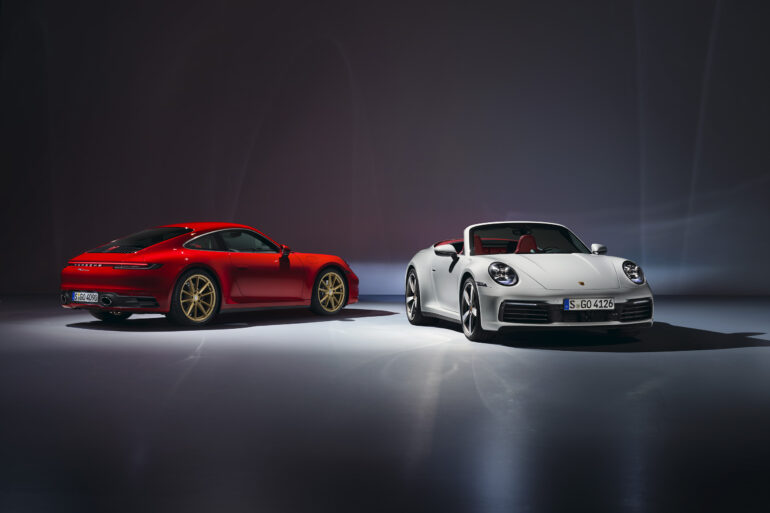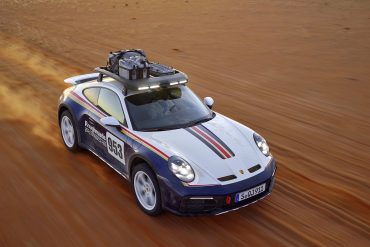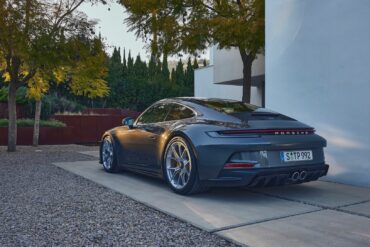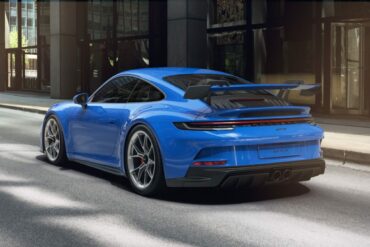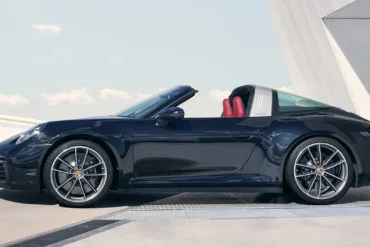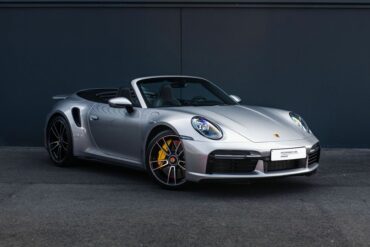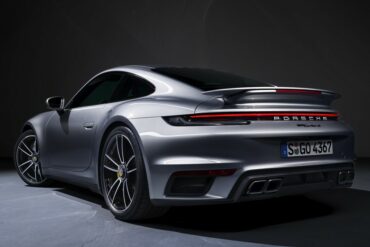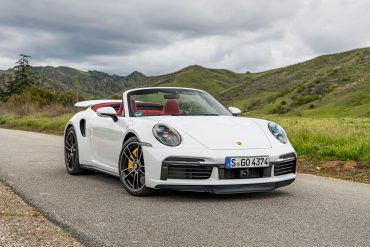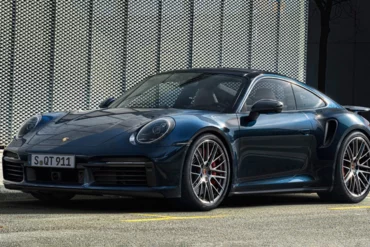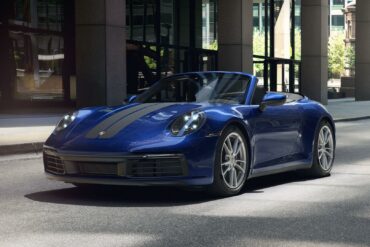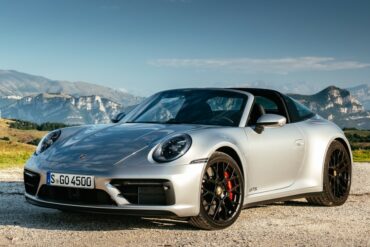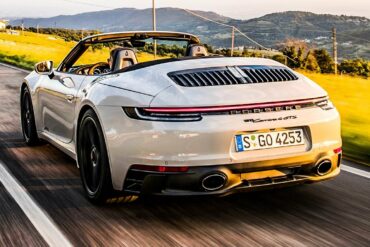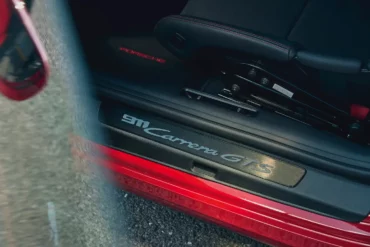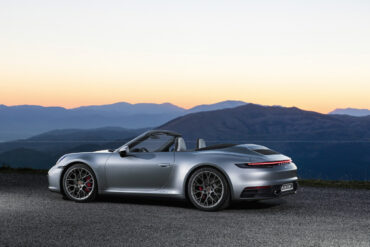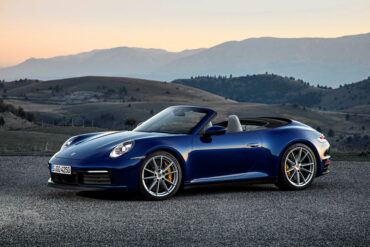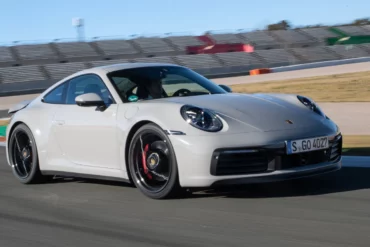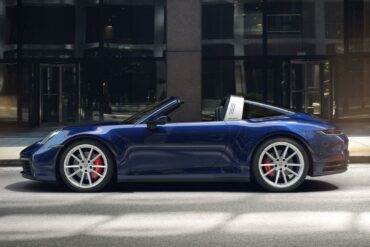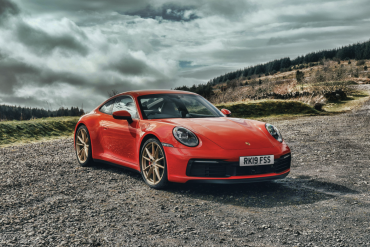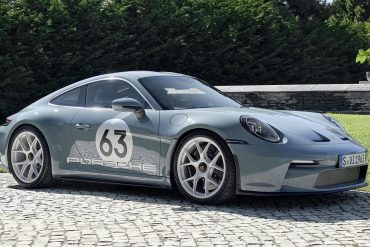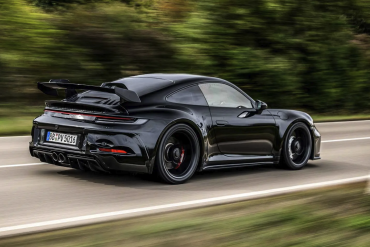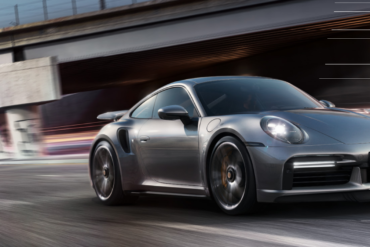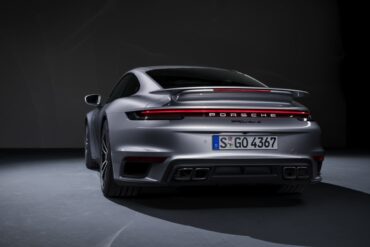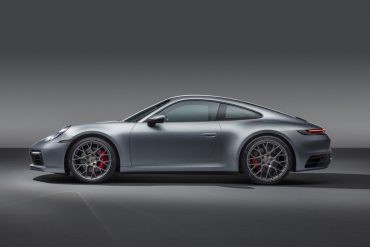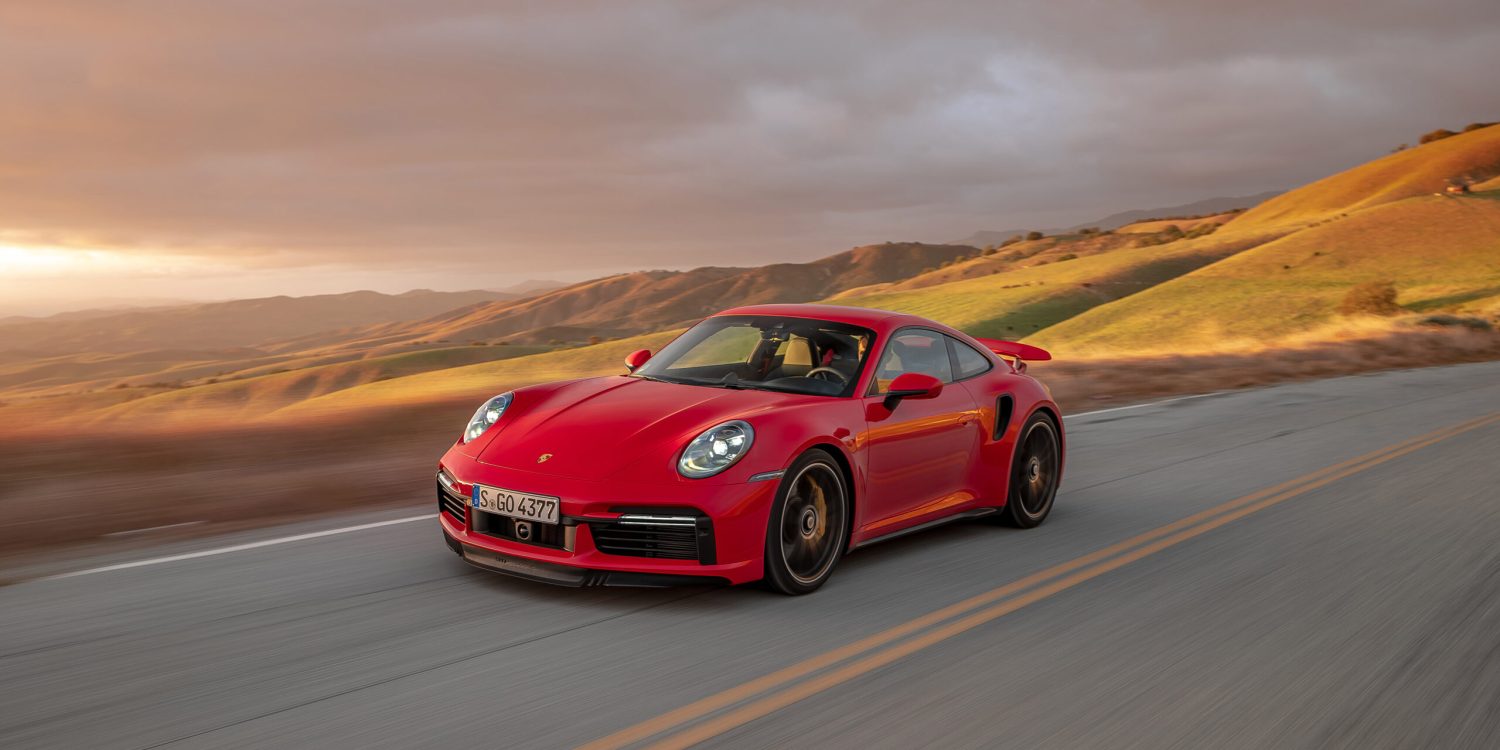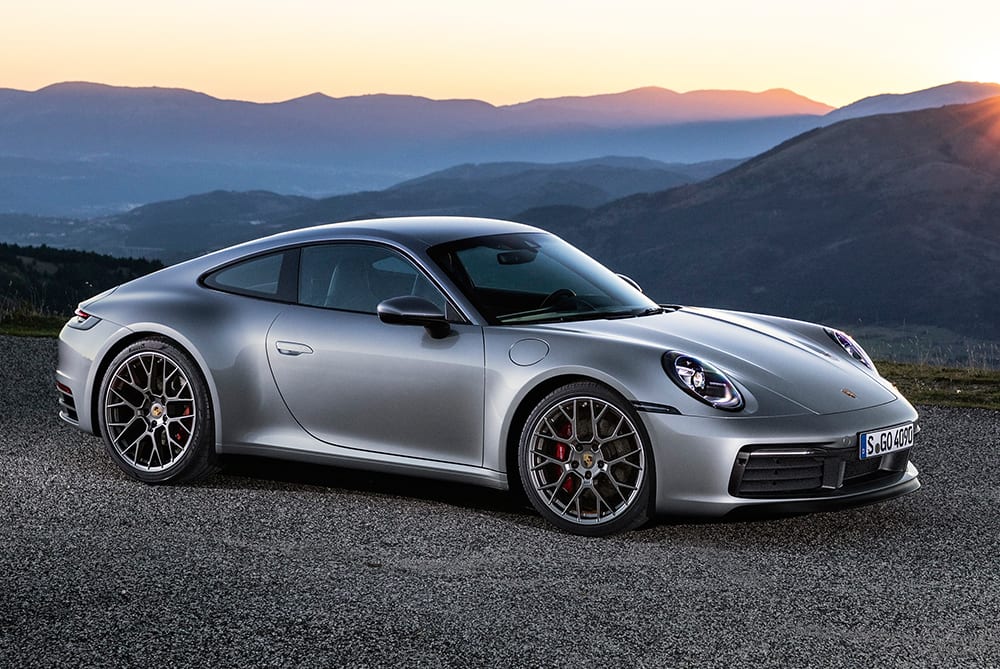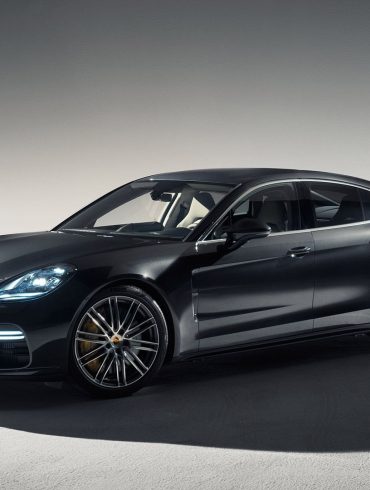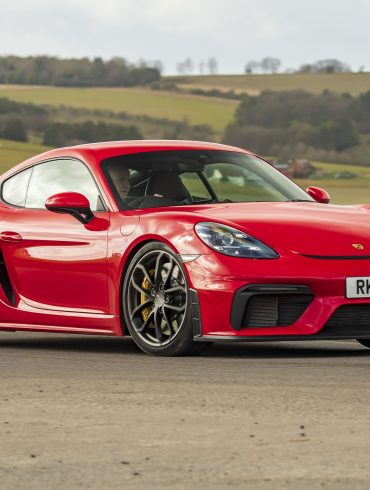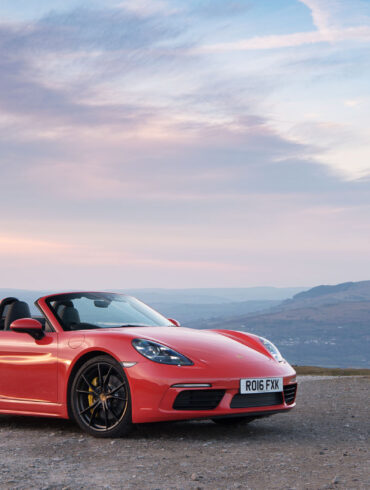Porsche makes sports car history by launching its first publicly available rally car, the $223,450 911 Dakar. After extensive testing, Porsche has settled on a 3.0-liter twin-turbo six-cylinder boxer engine with 473 hp and 420 lb-ft of torque and an 8-speed PDK. True to rally form, an 80-mm suspension lifts the car, along with an optional roof rack and model-specific Pirelli Scorpion all-terrain tires.
2022 Porsche 911
Variants, Reviews, Pricing, and Specs
Prices Starting at $102,550
Overview
"Faster, more emotional, and more connected" is how Porsche described the eighth generation Porsche 911 in their press release on November 27th 2018. We loved the design, harking back the 993-generation car, but its overall stance - its proportions and size - are naturally closer to the 991. Compared to its predecessor, the 992 is wider and now uses aluminium body panels. The 992 also has a new rear bumper with larger exhaust tips than its predecessor. While the 992's rear end width stayed the same as on the widebody 991, at the front, the body width was increased by 1.8"/45 mm, making room for the wider front track. The wider rear end is also standard across the entire range.
The next generation of flat-six turbocharged engines has been further developed to be more powerful than ever. There are numerous revisions and tweaks to the powerful turbocharged engines, the result in Carrera S is horsepower output increasing from 420 to 450 as a result. The 992 engine has the compulsory particulate filter which adds around 10 kg/22 lb. The PDK multi-clutch automatic transmission has 8 speeds. The first gear has a shorter gear ratio than before, which better matches lower gears to the turbocharged engines. Cars with manual transmission come with rear differential lock and Sport Chrono package with automatic rev-match function. The new cabriolet roof hydraulics reduce opening time to around 12 seconds and the new engine mounting position makes the cabriolet torsionally more rigid than its predecessor. This allows - for the first time - to offer PASM Porsche Active Suspension Management sport chassis for the 911 Cabriolet. The interior is completely new, but classic from the first glance. The gear selector is very small and only acts to select forward or backward driving direction. The instrument cluster is similar to the latest Panamera - the central tachometer gauge is accompanied with digital screens on the left and right. The touchscreen now has a diameter of 10.9".
As expected, Porsche launched the Carrera S and 4S first and then we saw the rest of the lineup trickle in over the following 12 - 18 months. There is a 911 for everybody. In 2021, we saw the full GTS lineup announced and the 911 GT3 (now with a dedicated GT3 Touring model). The lineup has never looked better and we cannot wait to see the rest of the special editions.
There’s no car quite like a Porsche 911 – and for many, that’s part of its evergreen appeal. The latest 992-generation is familiar in many respects, and differs from its predecessors in others, but get it on a twisting road or a race track and there’s no doubting its provenance.
EVO.co.uk
Pros
Impressive powertrains; chassis; response and tactility of controls. There is a 911 for every buyer and they are all awesome.
Cons
You need to push it too hard to find the joy. New tech and larger size make them less "fun" than the old days
Verdict
Still the best sports car on the planet (any variant). Luxury car, supercar, track car and everything in between.
What's New for 2022
The most exciting additions to the 2022 911 lineup are the GT3 and GT3 Touring. The bad news of course is that these cars are going for US$100k over sticker and are impossible to get. The even racier GT3 RS which will be announced any day is likely to be just as in demand so that doesn't help. The good news for the rest of us is that for 2022 we also get the GTS variants. Available in all bodystyle and driven wheel combinations, the GTS models get a 473-hp version of the twin-turbo flat-six, a specially tuned suspension, the black GTS trim treatment and a host of other performance upgrades. For the rest of the 2022 911 lineup you can expect the latest infotainment software, including new features such as Android Auto. There is also a special edition that was just released to celebrate 50 years of Porsche Design, a limited number (750) of special-edition 911 Targas based on the Targa 4 GTS.
Our Pick of the Range
We aren't going to pick a winning 911 because Porsche does an amazing job of creating variants that are so specialized that they appeal to a specific type of customer. If you want a daily 911 with more than enough power and speed for any occasion, then just pick a Carrera S (Carrera 4S if you are in a cold climate). Add Sport Chrono, Sport Seats Plus and the Sport package. If you need something with a bit more fire, then the GTS variants are basically perfect street cars and can easily keep you entertained on track if that is your thing. All the money in the world and nothing to spend it on, then yes, the 911 GT3 is that good and you should buy it. For those shopping in 911 Turbo-land, just spend the extra money to get the 640 horsepower Turbo S. In terms of bodystyles, they are all so close in terms of performance it really comes down to preference. We're suckers for the Targa here at Stuttcars.
2022 Pricing Guide
911 Carrera Coupe - $102,550
911 Carrera S Coupe - $118,450
911 Targa 4 - $122,650
911 Carrera 4S Coupe - $125,750
911 Carrera S Cabriolet - $131,250
911 Carrera GTS - $138,050
911 Carrera 4S Cabriolet - $138,550
911 Carrera 4 GTS - $145,350
911 Carrera GTS Cabriolet - $145,350
911 Carrera GTS Coupe - $150,850
911 Targa 4 GTS - $158,150
911 GT3 - $162,450
911 GT3 Touring - $163,450
911 Turbo Coupe - $175,650
911 Turbo Cabriolet - $188,450
911 Turbo S Coupe - $208,350
911 Turbo S Cabriolet - $221,150
911 Sport Classic - Price TBD (2023)
911 GTS Cabriolet America Edition $186,370 (2023)
Ranking vs Competition
Porsche 911 - $102,550
Porsche 911 Turbo - $175,650
Porsche 911 GT3 - $162,450
Maserati MC20 - $215,995
Aston Martin Vantage - $142,086
McLaren GT - $215,000
While marginally larger and heavier than the 991-generation model it replaced, the 992 is also more advanced. The architecture is more aluminium-intensive, it sports wider tracks, and Porsche’s turbocharged engines which have been fettled for even more power and torque.
EVO.co.uk
2022 Porsche 911 Lineup
The first models to debut were the Carrera S and Carrera 4S. Both models are powered by a 3.0-litre twin-turbocharged flat-6 engine. The Carrera S and Carrera 4S Cabriolet followed a few months later, while the base Carrera and Carrera 4 was introduced in mid-2019. Porsche announced the Targa cars a year later. In mid-2021 we saw the full range of the five GTS models announced and as expected they were all well-specced, almost perfect out of the box. The top of the regular model lineup is still the 911 Turbo and Turbo Cabriolet, both with 572 hp and all-wheel drive sure-footedness. Introduced in March 2020, the 992 Turbo S and Turbo S Cabriolet were the first special edition 992 generation cars. In February 2021, Porsche introduced the 992's GT3 version. It uses the same 4.0 litre naturally aspirated flat-6 as the 991.2 generation, now producing and producing 500 bhp and 338 ft lbs of torque. Porsche spent a lot of time optimizing aero and managing weight. the GT3 features a large rear spoiler with larger air vents, a bigger diffuser, two large exhaust connections, bucket seats in its interior, and an optional roll cage. Porsche also introduced double-wishbone suspension, making the car stiffer and more stable with less body movements under braking. In short, the 992-gen GT3 has stiffer, faster-reacting damping, but with more comfort than before.
The latest heat-seeking 911 GT3 is a driver’s tool of rare precision.
Car And Driver
Join Our Porsche Community
Sign up for our weekly Porsche newsletter. The latest Porsche news, rumors, reviews and more delivered to your inbox. Cool Porsche stuff perfect for the flat-six obsessed.


